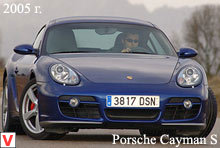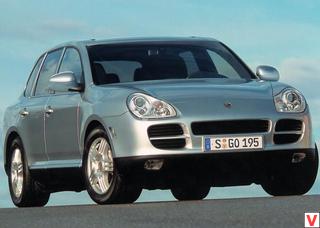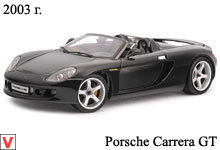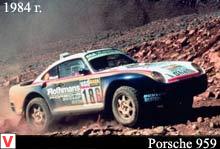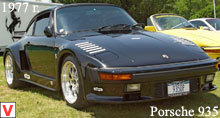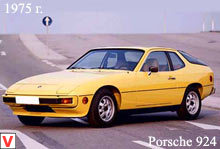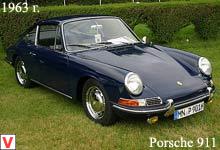The Porsche Panamera is a Gran Turismo five-door, sporty fastback with a front-engine layout and either full or rear-wheel drive. Production and sales of the car began in 2009. The car received the name Panamera thanks to the successful performances of Porsche in the race Carrera Panamericana, which took place in the 50s of the XX century. The length of the 5-door car - 4970 mm, width - 1931, height - 1418; wheelbase - 2920 mm, track - 1658/1662.
With such characteristics, the Panamera, without a doubt, declares its affiliation to luxury cars. The body itself is made using a whole group of materials: various grades of high-strength steel, aluminum alloys and magnesium. That allowed to significantly increase its rigidity and significantly reduce the mass.
Most of the power "cages" of the body are welded from hot-formed steel, hardened or heavy-duty. The front side members are aluminum, they are fastened to steel parts with rivets through gaskets that prevent electrochemical corrosion. All the hinged parts are made of aluminum. The framework of the radiator and doors are cast from a magnesium alloy and cannot be repaired in case of an accident. The flat bottom and sloping roof provide the Panamera S version with a drag coefficient of 0.29. For cars with turbocharging and intercoolers in the front bumper Cx slightly worse - 0.3.
A lifting-sliding spoiler is installed at the rear, which, at a speed of 250 km / h, creates an additional downforce force of 650 Newtons. Curb weight rear-wheel drive Panamera S with manual transmission - from 1855 kg. Four-wheel drive 4S heavier - 1925 kg. Designers sought to give the Porsche Panamera a peculiar and highly individual look. The main feature of the exterior is a new 5-door body structure with a hollow roof that descends. The interior of the Panamera is a combination of captivating luxury and the atmosphere of a sports car.
In the cockpit-style cabin, which is divided into functional zones by a wide transmission tunnel, plastic is almost completely absent, mainly leather is used in the decoration (various designs and shades are optional), wood and metal. The owner who honors traditions will not have to change his habits: the ignition lock is habitually located to the left of the steering wheel. The classic, in the style of the 911 series, the instrument panel of five separate dials with a tachometer located in the center pleases with its informativeness.
In addition, to the right of the tachometer there is a 4.8-inch color display that displays maps of the navigation system and the menu of a Russified on-board computer. If, for example, it is necessary to change the settings of the suspension or the air conditioner, and also to make the sound of the motor more rolling (there is such an option), you just need to press the corresponding key, indicated by a clear symbol. It is quite convenient to use the various settings using the buttons, since they are divided according to their functional purpose and have a good ergonomic layout. The luggage compartment, if desired, can be increased from 445 to 1263 liters, folding the rear seat backs.
By the way, the rear door is opened remotely, with the help of a key, executed in the form of a reduced copy of the car. In the Russian market, the model is presented in three versions with the usual indexing for Porsche - it is the Panamera S with an atmospheric engine and rear-wheel drive, the Panamera 4S with the same engine, but with all-wheel drive, and the Panamera Turbo is an all-wheel drive version equipped with turbocharging. All cars are only available with a V-shaped 8-cylinder engine, inherited from the Cayenne model, which has undergone significant modernization. The Panamera S is a 400-horsepower, 4.8-liter, naturally-aspirated V8 engine with direct injection.
Acceleration from 0 to 100 km / h takes Panamera S 5.4 seconds. Panamera Turbo produces 500 hp at 6000 rpm, the maximum torque is 700 Nm. From a standstill to 100 km / h, the turbo-charged version accelerates in just 4.2 seconds, the announced maximum speed is 303 km / h (without an electronic limiter). The average consumption of gasoline is 12.2 liters per 100 kilometers. A new 7-speed PDK with two clutches is offered as a transmission for all versions. True, for the rear-wheel drive Porsche Panamera S it is available as an option, the basic box is a 6-speed "mechanics".
In order to place these engines under a low bonnet, Porsche engineers had to “flatten” the crankcase pallets, and on all-wheel-drive versions they also had to pass the left front wheel drive shaft through the cylinder block. The crank mechanism was also modified. Friction was reduced and the mass of rotating parts was reduced by 16.5% (9.5 kg).
The working temperature of the motors was higher, which allowed to increase the efficiency of engines. However, the increase in engine efficiency was not converted to power, but to fuel economy. In Sport Plus mode, silencers open the dampers to reduce backpressure, which leads to an increase in power. Suspension front and rear "formula" - on double wishbone. By default, on coil springs (plus transverse stabilizers). An optional air suspension is available in conjunction with electronic systems for adjusting the stiffness of the shock absorbers (PASM) and active roll suppression (PDCC). It provides the car with almost perfect smoothness and significantly increases the driving dynamics.
At speeds up to 30 km / h by pressing the button, the driver can lift the chassis (20 mm) and vice versa, in speed mode the car sits 25 mm closer to the road - to reduce the height of the center of gravity. Brake discs at Porsche Panamera S with a diameter of 360 mm front and 330 mm rear (ventilated). While the Turbo is equipped with enlarged rotors of 390 and 350 mm, respectively. And for a surcharge, ceramic PCCB discs are offered - to match the powerful power unit. Five years later, Panamera was somewhat transformed. In general, the differences between the first and second generation can not be called revolutionary.
But there were more modifications - as many as nine, plus two platforms, plus five engines. External changes have affected headlights, the shape of which has become more tear-like, air intakes on the front bumper have expanded, the shape of the tailgate and rear lights has changed. Optics has become LED. LED headlights are offered in conjunction with the Porsche Dynamic Light System Plus (PDLS Plus) intelligent dynamic lighting system.
Their design is fundamentally different from the serial bi-xenon version: the headlights are directly created by two LED modules stacked on top of each other, while the side lights and direction indicator lights are placed in a separate section located in the bumper. There was a complete set of Panamera Executive (for versions of the Panamera Turbo and 4S), built on a wheelbase extended by 150 mm. In her cabin, there is more space for the legs of the rear passengers, who are offered additional comfort functions. The rear doors of these models are 15 cm wider. The atmospheric V-shaped "six" of 3.6 liters capacity of 310 hp became the basic power unit for the Panamera.
Modifications of the Panamera S, the Panamera 4S, as well as the new elongated Panamera Executive, received a biturbo three-liter V6 engine with 420 horsepower. The most expensive equipment - Panamera GTS, Panamera Turbo and Panamera Turbo Executive equipped with a V8 engine, a volume of 4.8 liters. In the GTS, its power is 440 horsepower, and in the Turbo and Turbo Executive, a pair of superchargers helps the motor, which increases its capacity to 520 hp. Porsche is also following the trend to reduce environmental damage and has installed a hybrid powertrain on its supercar.
This is a gasoline 3-liter V6 engine that works in tandem with an electric motor, while the car is equipped with a lithium-ion battery. The total power of such a power plant is 416 horsepower. The fuel consumption in the combined cycle of the hybrid is 3.1 liters per 100 kilometers. In this case, the car accelerates to 100 km / h in just 5.5 seconds, and the maximum speed is 270 km / h.
Battery capacity provides a range of 36 km and a maximum speed of 135 km / h. Battery charging time from a household electrical outlet is 4 hours, and when using the onboard on-board charger it is 2.5 hours. The line of diesel engines was originally represented by a 3.0 liter engine producing 250 hp. The six cylinders of this engine have a V-shaped arrangement, and the fuel injection into the combustion chambers is ensured by the Common Rail direct injection system, operating under pressure up to 2000 bar.
In addition, the engine is equipped with a turbocharger with variable turbine geometry (VTG) and nozzles with piezo-control, allowing you to perform several injection processes at once in one cycle of operation of the power unit. The maximum torque is 550 Nm in the range of 1750 - 2750 rev / min. Of the complete set Panamera mechanical transmission finally disappeared.
